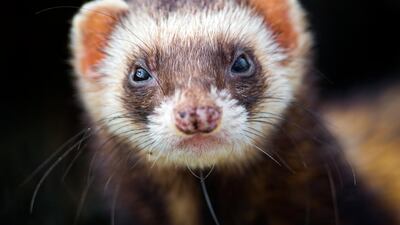The coronavirus can remain infectious in the air, a new animal research showed.
The study, which has not yet been peer reviewed, proved ferrets were capable of transmitting the virus, despite being more than a metre apart.
Researchers from the Erasmus University Medical Centre in Rotterdam set out to examine the transmission of the virus, also known as Sars-Cov-2, and its close cousin Sars by infecting ferrets and keeping them away from healthy animals.
While the infected ferrets were kept at a distance, researchers ensured the air flow in the transmission chamber was channelled in a way that it reached the healthy ferrets.
"Both viruses caused a robust productive respiratory tract infection resulting in transmission of Sars-Cov-2 to two of four indirect recipient ferrets and Sars-Cov to all four," the authors said in a report on online science archive BioRxiv.
“These results demonstrate that Sars-Cov and Sars-Cov-2 can remain infectious while travelling through the air.”
Researchers ensured that air flowed in such a way that ferrets were "constantly at the right place at the right moment".
That may have contributed to the "relatively high efficiency of virus transmission via the air", they said.
The ferret transmission model is extensively used to assess the effects of respiratory viruses.
The lungs and airways of the animals resemble humans and they contract viruses in a similar way.
Previous studies proved the coronavirus can be found in minuscule droplets that float in the air long after an infected person coughs, breathes, or sneezes.
But scientists said it was not clear how many particles were needed to infect people.
The US Centres for Disease Control and Prevention recently said virus particles in the air can and do infect others under "certain circumstances".
However, the agency said such events typically involved an infected person producing respiratory droplets for longer than 30 minutes in an enclosed space.
Ferrets are part of the mustelidae family, which also includes mink.
The virus has torn through mink farms in the US and Europe, causing the cull of hundreds of thousands of the animals.
This month, the Danish government ordered the cull of more than one million mink in farms across the country after a series of Covid-19 outbreaks.
In May, it was announced a Dutch worker caught the virus from a mink in the first recorded case of its kind.
Subsequent studies provided further evidence of transmission from mink to humans, providing strong evidence of zoonotic transmission.
The virus is believed to have originated in bats.
Bats are one of the biggest reservoirs of viruses and many of these can be transmitted to people.
Research shows the lineage from which the virus came has been circulating among bats for decades and diverged from other bat viruses between 40 and 70 years ago.









